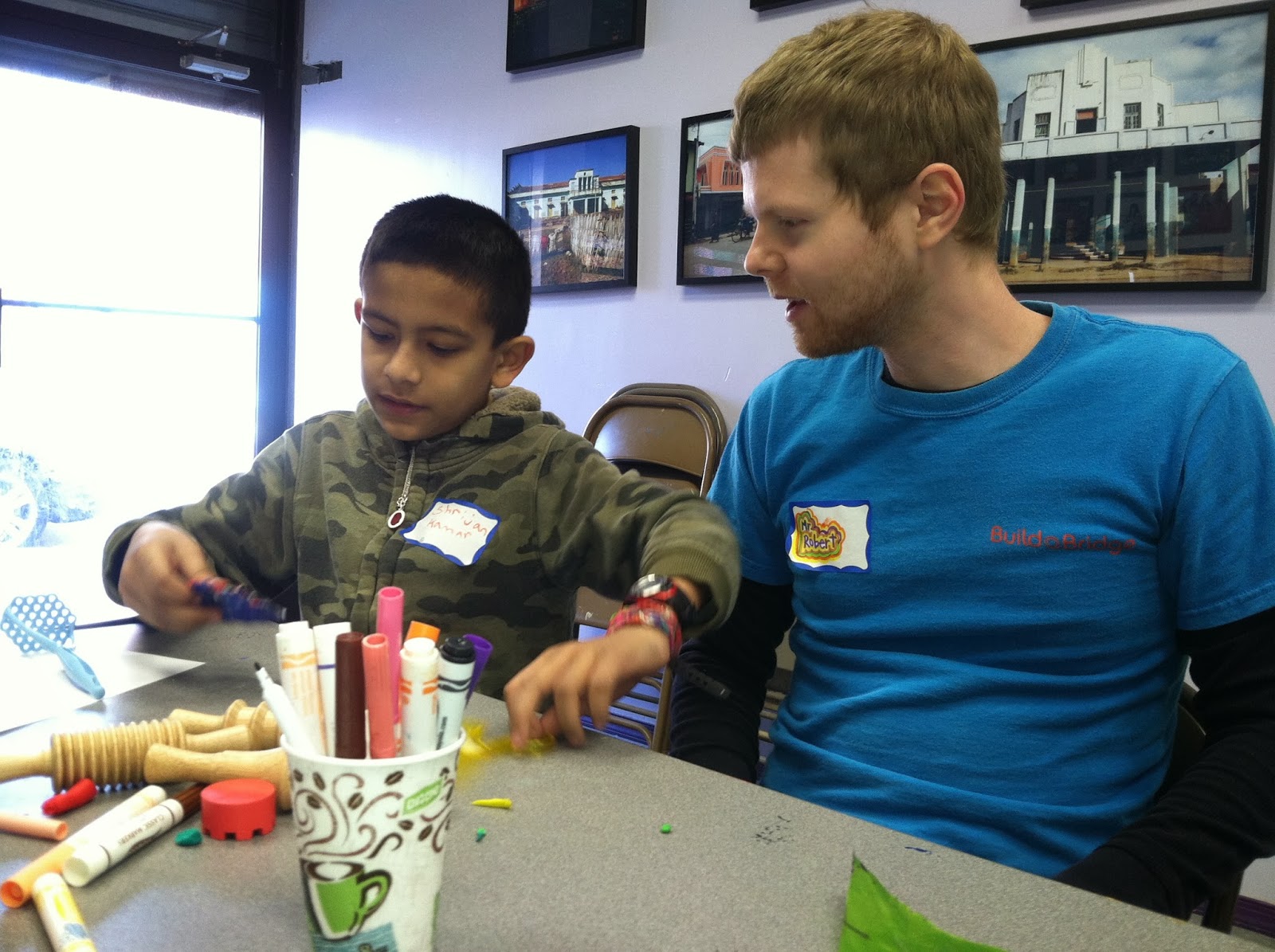Wednesday, March 26, 2014
Why is art important for refugee children?
For refugee children, art-making experiences within the BuildaBridge Classroom model have helped them identify adjustment strategies, build on their personal strengths and build resiliency in a new culture.
S is a 10-year old Bhutanese refugee girl who has been attending BuildaBridge groups since they started in August 2011 with almost near perfect attendance. In the almost three years of her attending groups, through art-making, S has made significant progress in all of the BuildaBridge outcome areas (social, character development, artistic and academic). As an illustration of the development of her social skills, S has improved relations with her younger brother with whom she is often competitive. This has been an ongoing growth area the therapists have been addressing. During the past two years, S has physically participated less in the movement experiences when other girls are not in attendance. During this third year of programming and as an illustration of her increased character development and artistic skills, S now participates fully and with consistent rhythm even when she is the only girl in the group. With regard to the visual arts, S would often rush to create as many pieces as possible. Therapists revealed this year that she is savoring the process of completing one, quality piece of art. One of the most significant ways S has progressed in her development is the recognition and explanation of her past. On November 17, 2013, the art therapist noted in her assessment, “This session is the first group that S has ever explicitly talked about the move from Nepal to Philadelphia. Her discussions of topics like these have deepened in thoughtfulness.” It is on this foundation that therapists continue to work with S through art-making experiences on exploring her past, her traumas and her dreams for the future.
Tuesday, March 11, 2014
Nothing lasts forever
 |
| Teaching artist assistant Robert Kelleher works with a child on his project |
For the past several weeks in the Bhutanese movement and visual art group we have been discovering and unfolding the metaphor that just as some art materials create art work that is impermanent, semi-permanent, and permanent, there are things in life that are impermanent, semi-permanent, and permanent. The last two group sessions have focused on permanent art. The children have been imprinting sculpey clay with the soles of shoes and other found objects, that we then bake and bring back to them. The children have started the process of writing narrative stories about their "artifact" sculptures using words and symbols. As they explore how their sculptures have hardened and become permanent (unless broken), they have connected the idea that they also leave artifacts of themselves and can have a permanent imprint on the world.
Children shared that by helping each other, caring for others, and sharing things with their siblings, they leave a positive imprint. Just this last session we talked about the life long imprint they would like to leave, children began expressing all of the things they would like to be as they grow up. Some responses included a rock star, the president, a teacher, an artist, and a few are interested in becoming doctors who help to heal people. Children have been continually working on the social skills of collaboration, turn-taking, respecting one another, honoring their personal space and sharing public space, sharing materials and ideas, and listening and welcoming others. The children are challenged to do these things in every ritual, transition, and art experience throughout our sessions.
We have also been exploring the life cycle of the Monarch Butterfly, particularly the migration and metamorphosis patterns. We have also learned that while the life of the Monarch is constantly changing and they are often migrating they also have a lasting effect or imprint on the environment. Children have collaboratively choreographed dances using the composition skills of beginning, middle, and end, original creative movement invention, and props to tell the story of their own imagined butterflies. The dances tell of butterflies who find long lost friends, butterflies who had to leave their homes to find the food they needed to grow, butterflies who have lost their parents, butterflies who go north, then south, then north, then south, and butterflies who bring joy to the places they go. The children observed one another's dances as an audience at a professional performance, creating a stage space and an audience space and clapping eloquently for one another. -- written by Julia Crawford, Lead Therapeutic Movement Instructor
Subscribe to:
Comments (Atom)


